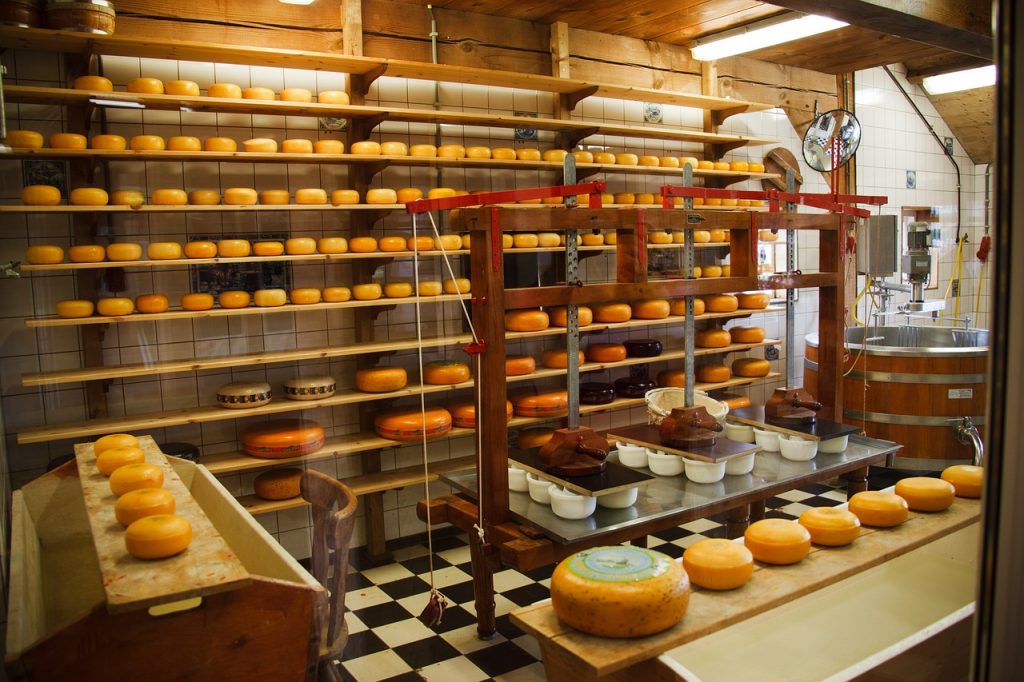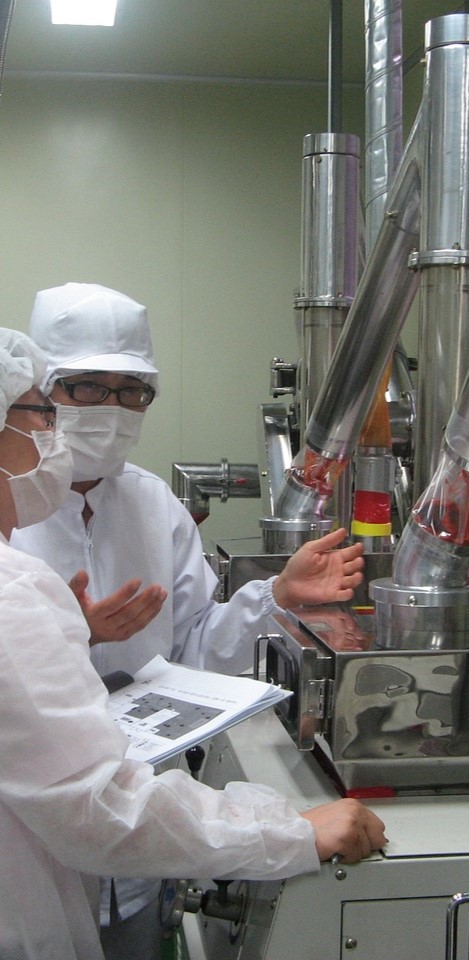Highlights
- Hurdle technology combines multiple preservation techniques, such as heat, pH adjustments, and preservatives, to create a hostile environment for microorganisms and extend the shelf life of food products while maintaining their nutritional value and sensory qualities.
- Barriers refer to factors or conditions that inhibit microbial growth and prevent spoilage.
- Hurdle technology plays a crucial role in achieving food safety by combining multiple barriers to reduce the risk of foodborne illnesses.
- Multiple barriers, synergistic effects, hurdle intensity, hurdle order, hurdle combinations, hurdle validation and monitoring, quality considerations, and minimal processing are the key principles guiding the implementation of hurdle technology.
In the ever-evolving world of food preservation, one technology stands out for its ability to break barriers and revolutionize the way we store and consume food. Hurdle technology, a cutting-edge approach that combines multiple preservation techniques, has emerged as a game-changer in the food industry.
Hurdle technology is an innovative approach in the field of food preservation that involves combining multiple barriers or hurdles to inhibit microbial growth and extend the shelf life of food products.
By using a combination of mild treatments such as heat, pH adjustments, and preservatives, hurdle technology creates a hostile environment for microorganisms, extending the shelf life of perishable food products while maintaining their nutritional value and sensory qualities. In this article, we will delve into the fascinating world of hurdle technology, exploring its benefits, applications, and its potential to address some of the biggest challenges in food preservation.
The Concept of Barriers in Food Preservation
Food preservation has always been about overcoming barriers. From ancient civilizations using salt and smoke to modern techniques like canning and freezing, the goal has been to create an environment that inhibits the growth of microorganisms and prevents spoilage.
In food preservation, the concept of barriers refers to the various factors or conditions that act as hurdles or obstacles to prevent or inhibit microbial growth, enzymatic reactions, and other deteriorative processes that can lead to spoilage or foodborne illnesses.
These barriers create unfavorable conditions for microorganisms and help maintain the safety and quality of food products. Here are some common barriers used in food preservation:
- Physical Barriers: Physical barriers physically separate the food product from potential sources of contamination. This can include packaging materials, such as cans, bottles, or films, which provide a protective layer to prevent microbial entry and maintain product integrity.
- Chemical Barriers: Chemical barriers involve the use of substances that inhibit or slow down microbial growth. These can include antimicrobial agents, such as organic acids (e.g., citric acid), salt, sugar, preservatives, or natural compounds with antimicrobial properties. Chemical barriers can interfere with microbial metabolism, cell membrane integrity, or enzyme activity.
- Temperature Barriers: Temperature is a crucial barrier in food preservation. Lower temperatures, such as refrigeration or freezing, can significantly slow down or inhibit microbial growth. Heat treatment methods like pasteurization or sterilization can also destroy or inactivate microorganisms and enzymes.
- Water Activity Barriers: Controlling water activity (aw) is an important barrier to prevent microbial growth. By reducing the available water content in food products, either through drying, adding salt or sugar, or using other water-binding agents, the growth of microorganisms is hindered.
- pH Barriers: pH is a measure of the acidity or alkalinity of a substance. Adjusting the pH of a food product can create a barrier against microbial growth. Most microorganisms have specific pH ranges in which they can grow, and altering the pH outside their optimal range inhibits their growth and survival.
- Oxygen Barriers: Some microorganisms require oxygen for growth, while others are hindered by its presence. Oxygen barrier packaging, such as vacuum packaging or modified atmosphere packaging (MAP), helps create an oxygen-reduced environment, inhibiting the growth of aerobic spoilage microorganisms.
- Biological Barriers: Some preservation techniques involve the use of beneficial microorganisms or enzymes that can compete with or inhibit the growth of spoilage or pathogenic microorganisms. For example, using starter cultures in fermentation processes can create conditions that promote the growth of desired microorganisms and inhibit harmful ones.
Note: These barriers are the hurdles employed in hurdle technology.
The Importance of Hurdle Technology in Food Safety
Food safety is a top priority for both consumers and producers. With the increasing global population and the demand for convenient, ready-to-eat foods, it is crucial to ensure that the food we consume is safe and free from harmful microorganisms. Hurdle technology plays a vital role in achieving this goal.
By combining multiple hurdles, this approach creates a synergistic effect that makes the food environment hostile to microorganisms, reducing the risk of foodborne illnesses. This technology has the potential to significantly improve food safety standards and protect public health.
Key Principles of Hurdle Technology
Hurdle technology is based on several key principles. The first principle is the use of multiple hurdles instead of relying on a single preservation technique. By combining different hurdles, such as temperature, pH, water activity, and preservatives, the effectiveness of each hurdle is enhanced, making it more difficult for microorganisms to adapt and survive. The second principle is the use of mild treatments. Unlike traditional preservation methods that rely on extreme heat or cold, hurdle technology employs mild treatments that minimize the impact on the sensory and nutritional qualities of the food. This ensures that the final product is not only safe but also maintains its taste, texture, and nutritional value.
Hurdle technology is based on several key principles that guide its implementation in food preservation and safety. These principles help food manufacturers design and apply effective hurdle strategies to control microbial growth and ensure the safety and quality of food products. Here are the key principles of hurdle technology:
- Multiple Barriers: Hurdle technology relies on the use of multiple barriers rather than a single method to inhibit microbial growth. The combination of hurdles creates a cumulative effect, making it difficult for microorganisms to survive and grow. Each barrier targets a specific aspect of microbial control, such as pH, temperature, water activity, preservatives, or packaging.
- Synergistic Effects: The combination of different hurdles in hurdle technology is intended to produce synergistic effects. This means that the overall inhibitory effect of the combined barriers is greater than the sum of their individual effects. The interaction between barriers enhances microbial control and helps achieve a more robust preservation system.
- Hurdle Intensity: The intensity or magnitude of each hurdle is crucial in hurdle technology. The effectiveness of each barrier is determined by factors such as concentration, temperature, exposure time, or application method. Optimizing the intensity of each hurdle ensures that the desired inhibitory effect is achieved.
- Hurdle Order: The order in which hurdles are applied can impact their effectiveness. Some barriers may enhance or support the inhibitory effects of others when applied in a specific sequence. It is important to consider the order of applying hurdles to maximize their synergistic effects and microbial control.
- Hurdle Combinations: The selection and combination of specific hurdles depend on the food product, its characteristics, and the target microorganisms. Hurdle combinations need to be carefully designed, taking into account the product’s pH, water activity, composition, processing conditions, and the microorganisms of concern. Tailoring the hurdle combinations to specific products enhances their effectiveness.
- Hurdle Validation and Monitoring: It is important to validate and monitor the effectiveness of hurdle technology in controlling microbial growth. This involves conducting microbial challenge tests, shelf-life studies, and validation experiments to ensure that the selected hurdles and their combinations achieve the desired microbiological control.
- Quality Considerations: Hurdle technology aims not only to ensure food safety but also to maintain the quality, sensory attributes, and nutritional value of food products. The selection and application of hurdles should take into account their potential impact on the product’s quality and consumer acceptance.
- Minimal processing: Unlike traditional preservation methods that rely on extreme heat or cold, hurdle technology employs mild treatments that minimize the impact on the sensory and nutritional qualities of the food. This ensures that the final product is not only safe but also maintains its taste, texture, and nutritional value.
Benefits of Hurdle Technology
Hurdle technology offers several benefits in food preservation and safety. Here are some key benefits of implementing hurdle technology:
- Enhanced Microbial Control: Hurdle technology combines multiple barriers, each targeting different aspects of microbial growth. This synergistic approach makes it difficult for microorganisms to survive and grow, resulting in enhanced control of spoilage microorganisms and pathogens.
- Extended Shelf Life: By inhibiting microbial growth and enzymatic reactions, hurdle technology helps extend the shelf life of food products. This reduces food waste, improves product availability, and enhances economic viability for food manufacturers.
- Reduction in Chemical Preservatives: Hurdle technology allows for a reduction in the use of high levels of chemical preservatives. By employing multiple barriers, the reliance on artificial additives can be minimized while still achieving effective microbial control.
- Preservation of Nutritional Value: Hurdle technology helps preserve the nutritional value of food products. By minimizing the need for excessive heat treatment or prolonged storage, essential nutrients, vitamins, and bioactive compounds can be better retained in the final product.
- Maintenance of Product Quality: Hurdle technology helps maintain the quality attributes of food products. By controlling microbial growth, enzymatic reactions, and oxidation, the texture, flavor, color, aroma, and overall sensory characteristics of the products can be preserved.
- Customization for Specific Products: Hurdle technology allows for the customization of preservation methods based on the specific requirements of different food products. Each product can have its unique combination of hurdles tailored to its characteristics, ensuring optimal preservation and safety.
- Flexibility and Adaptability: Hurdle technology offers flexibility in adapting to different production and processing conditions. The combination and intensity of hurdles can be adjusted based on changes in ingredient availability, processing methods, or consumer preferences, while still maintaining effective microbial control.
- Reduction in Foodborne Illnesses: By effectively controlling microbial growth, hurdle technology helps reduce the risk of foodborne illnesses. This is particularly important for vulnerable populations, such as young children, the elderly, or individuals with compromised immune systems.
- Consumer Safety and Satisfaction: Hurdle technology provides consumers with safer food products that have undergone effective preservation methods. This enhances consumer confidence, satisfaction, and trust in the quality and safety of the food they consume.
- Regulatory Compliance: Hurdle technology helps food manufacturers meet regulatory requirements and standards for food safety. By implementing robust preservation systems, manufacturers can demonstrate their commitment to producing safe and high-quality food products.
Challenges and Limitations of Hurdle Technology
While hurdle technology offers numerous benefits, it is not without its challenges and limitations. Here are some of the key challenges and limitations associated with the implementation of hurdle technology:
- Complexity and Optimization: Designing an effective hurdle system requires careful consideration of multiple factors, such as the characteristics of the food product, target microorganisms, and interactions between different barriers. Achieving the optimal combination and intensity of hurdles can be challenging and may require extensive research and testing.
- Compatibility and Interaction: Certain hurdles may interact with each other, resulting in reduced effectiveness or undesired effects. For example, the use of certain antimicrobial agents may be inhibited or altered by the presence of other hurdles such as pH or packaging materials. Understanding and managing these interactions is crucial to ensure the desired microbial control.
- Cost and Resources: Implementing hurdle technology may involve additional costs, such as the procurement of specialized equipment, development of new formulations, or implementation of quality control measures. These costs can be a challenge, particularly for smaller food manufacturers with limited resources.
- Product Quality and Sensory Changes: Some hurdles, such as heat treatment or high-pressure processing, can impact the sensory attributes and quality of food products. Overcoming microbial challenges while maintaining desired product characteristics requires careful optimization to minimize any negative effects on taste, texture, color, and aroma.
- Regulatory Considerations: The use of certain hurdles or preservatives may be subject to regulatory restrictions or maximum allowable limits. Food manufacturers must ensure compliance with applicable regulations and standards when selecting and applying hurdles in their products.
- Microbial Adaptation: Continuous exposure to sub-lethal levels of hurdles may lead to the development of microbial resistance or adaptation over time. Microorganisms can evolve and develop mechanisms to survive under otherwise inhibitory conditions. Regular monitoring and validation of hurdle effectiveness are necessary to address any emerging microbial challenges.
- Consumer Acceptance: The addition of certain hurdles or changes in product characteristics due to hurdle technology may affect consumer acceptance. Consumers may have preferences for minimally processed or natural products, and the perception of altered taste, texture, or appearance may impact their purchasing decisions.
- Process Optimization and Scale-up: Scaling up hurdle technology from laboratory or pilot-scale to commercial production can present technical challenges. Process optimization, equipment selection, and ensuring consistent application of hurdles across large-scale operations require careful planning and validation.
- Limited Applicability to Some Products: Hurdle technology may not be suitable or effective for all types of food products. Certain highly perishable or fragile products may not withstand certain hurdles, or the combination of hurdles may not achieve the desired preservation objectives.
Future Prospects and Advancements in Hurdle Technology
As technology continues to advance, so does the potential for further developments in hurdle technology. Researchers are exploring new hurdles and combinations to enhance the effectiveness of this preservation approach. For example, the use of high-pressure processing, pulsed electric fields, and advanced packaging materials are being investigated to improve the shelf life and safety of food products. Additionally, advancements in nanotechnology and biotechnology may offer new opportunities for hurdle technology, such as the use of nanomaterials and bioactive compounds to enhance the preservation process. The future of hurdle technology looks promising, with endless possibilities for innovation and improvement.
Conclusion
Hurdle technology has emerged as a powerful tool in the world of food preservation. By combining multiple hurdles, this approach creates a hostile environment for microorganisms, extending the shelf life of perishable food products while maintaining their nutritional value and sensory qualities. With its numerous benefits and potential to address some of the biggest challenges in food preservation, hurdle technology has the power to revolutionize the way we produce, distribute, and consume food. By breaking barriers and embracing this innovative approach, we can ensure safer, healthier, and more sustainable food for future generations. The future of food preservation is here, and hurdle technology is leading the way. Let us seize this opportunity and embark on a journey towards a more secure and efficient food system.
Our Blog ↗
Read the latest from our blog
Ask a Question ↗
Ask a question and get answers from our community
Give Feedback ↗
We value your feedback.



